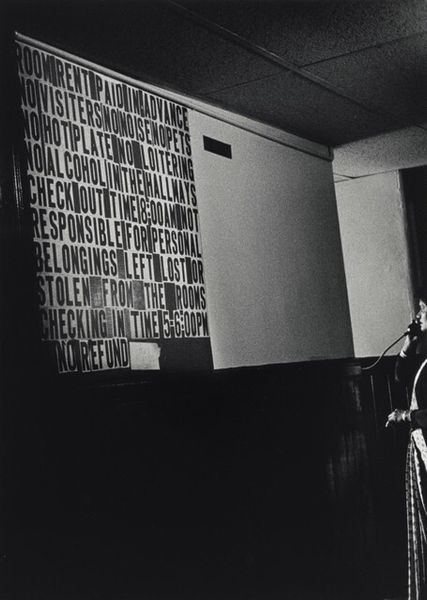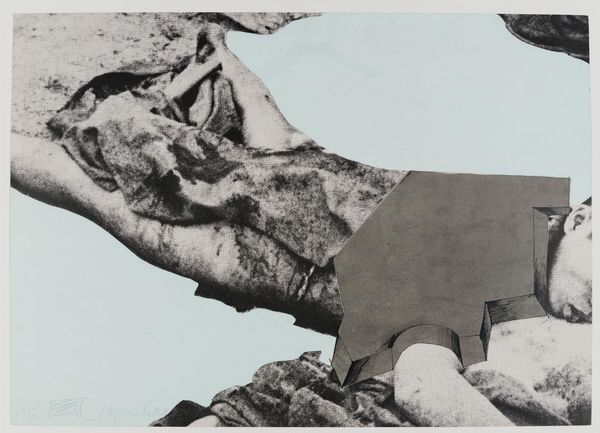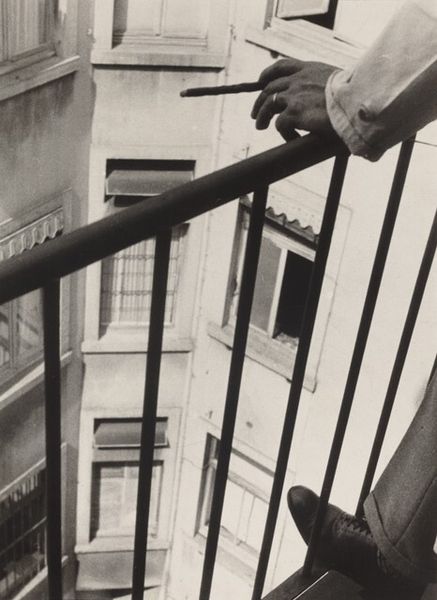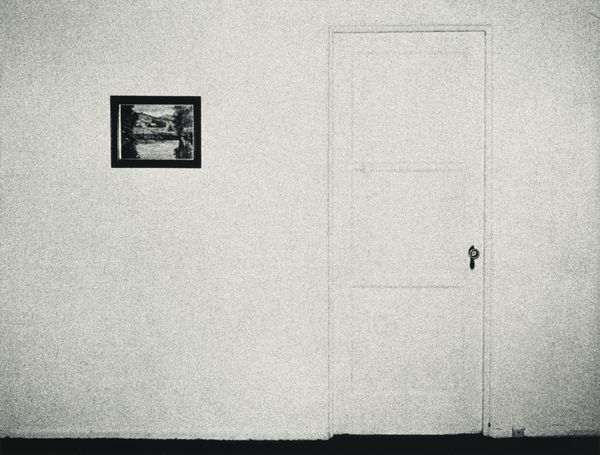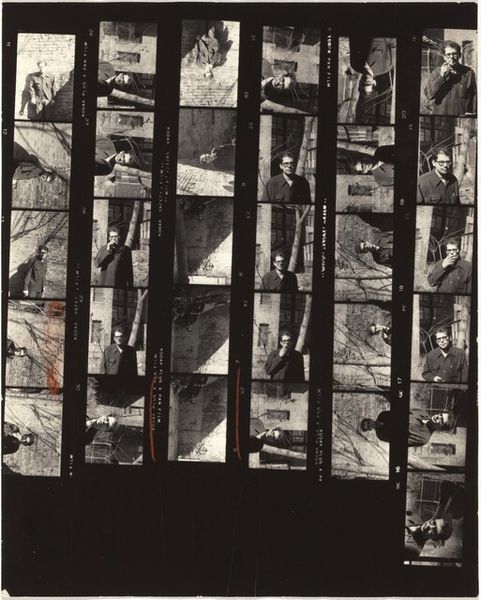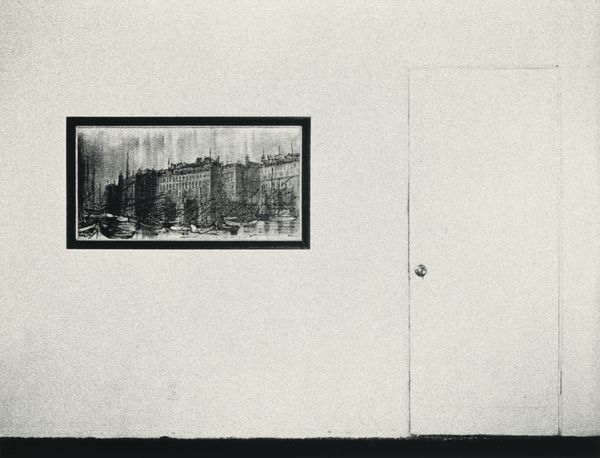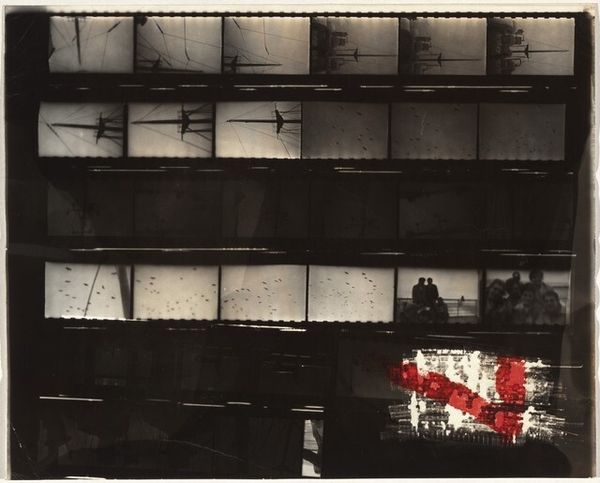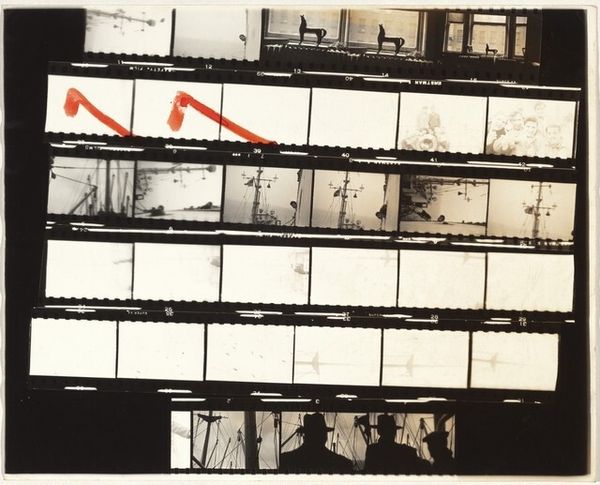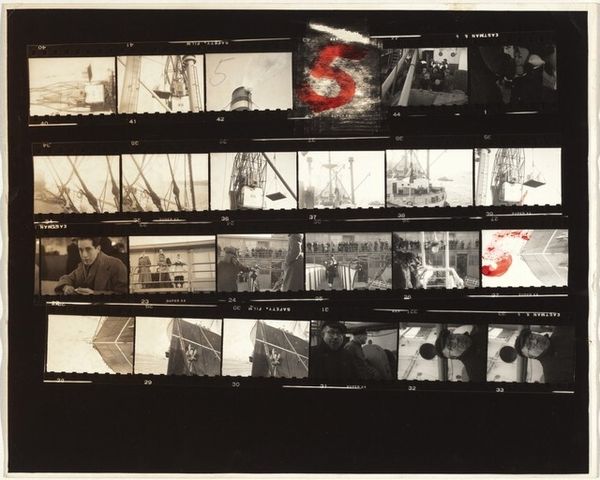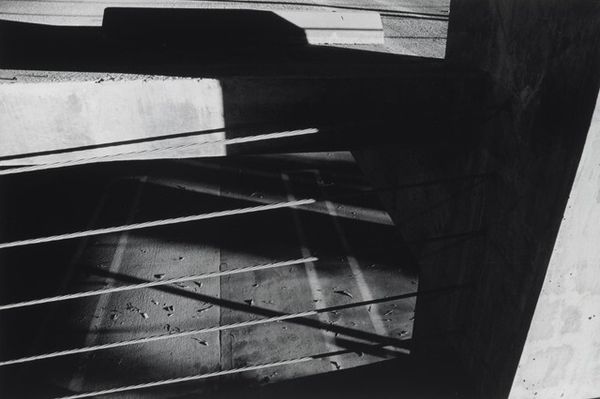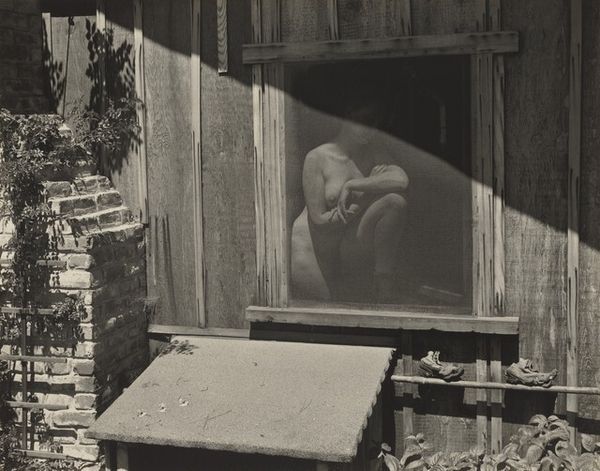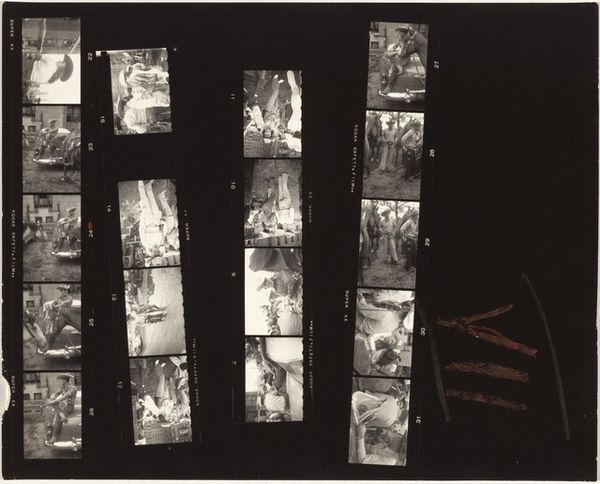
Dimensions: image/sheet: 12.75 × 10 cm (5 × 3 15/16 in.)
Copyright: National Gallery of Art: CC0 1.0
Curator: Ralph Steiner's "The Creaking Chair," likely captured sometime between 1923 and 1981, is a gelatin-silver print that immediately arrests my attention. Editor: It has a definite feeling of urban decay, but there’s also an almost theatrical drama created by the harsh blacks and whites. A feeling of anxious energy that keeps the viewer looking. Curator: I agree. The eye is immediately drawn to the layers of peeling posters on what appears to be a crumbling building facade. It really speaks to the transient nature of urban life, and the layers of history constantly being plastered over. What resonates are the posters advertising "The Creaking Chair," and “The Half Caste;” narratives, visible yet somehow vanishing, against a raw, exposed infrastructure. The monochrome emphasizes texture – the roughness of brick, the flaking of paper, against looming looming dark diagonal shadows of structural beams. Editor: Absolutely, and thinking about the social context, these would have been popular forms of entertainment – melodramas promising thrills. Consider what a play called ‘The Half Caste’ means in the moment the photo was captured! The presence of these now antiquated, likely racist, performance pieces against that decaying backdrop is striking. Steiner is speaking volumes. Also, the composition, fragmented by those striking black diagonal lines, creates an off-kilter effect. It denies us a clear, straightforward reading of the scene. Curator: The shadows add a layer of mystery, maybe even threat. You've highlighted something critical, the plays themselves; They are visual testaments to the cultural anxieties of the period. I feel it necessary to note the overt, and insidious racism of that moment and consider these performances of entertainment within that social order. Editor: It really forces a dialogue between the aesthetics and the uncomfortable social history embedded within it, how art shapes ideology, normalizes social perspectives. How those now torn and fading adverts offer silent testimonial. The fact that he chose this particular juxtaposition seems very intentional. Curator: He understood the power of images as historical and ideological artifacts, and how they’re interpreted. By presenting us with this specific framing, he’s engaging with complex issues around representation, history, and memory, inviting us to question what is preserved, and what is erased. Editor: It is powerful work to make a point that what has faded continues to scream when examined carefully. I will look for Steiner’s other social commentaries.
Comments
No comments
Be the first to comment and join the conversation on the ultimate creative platform.

